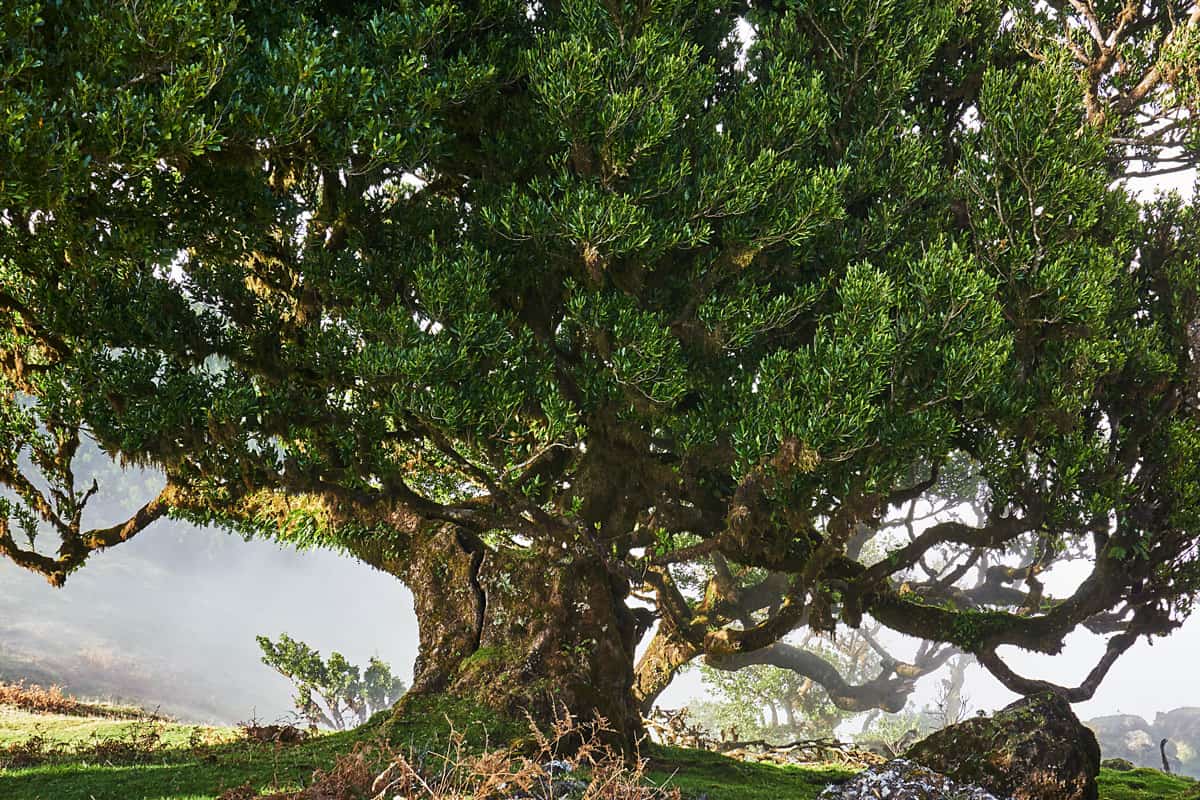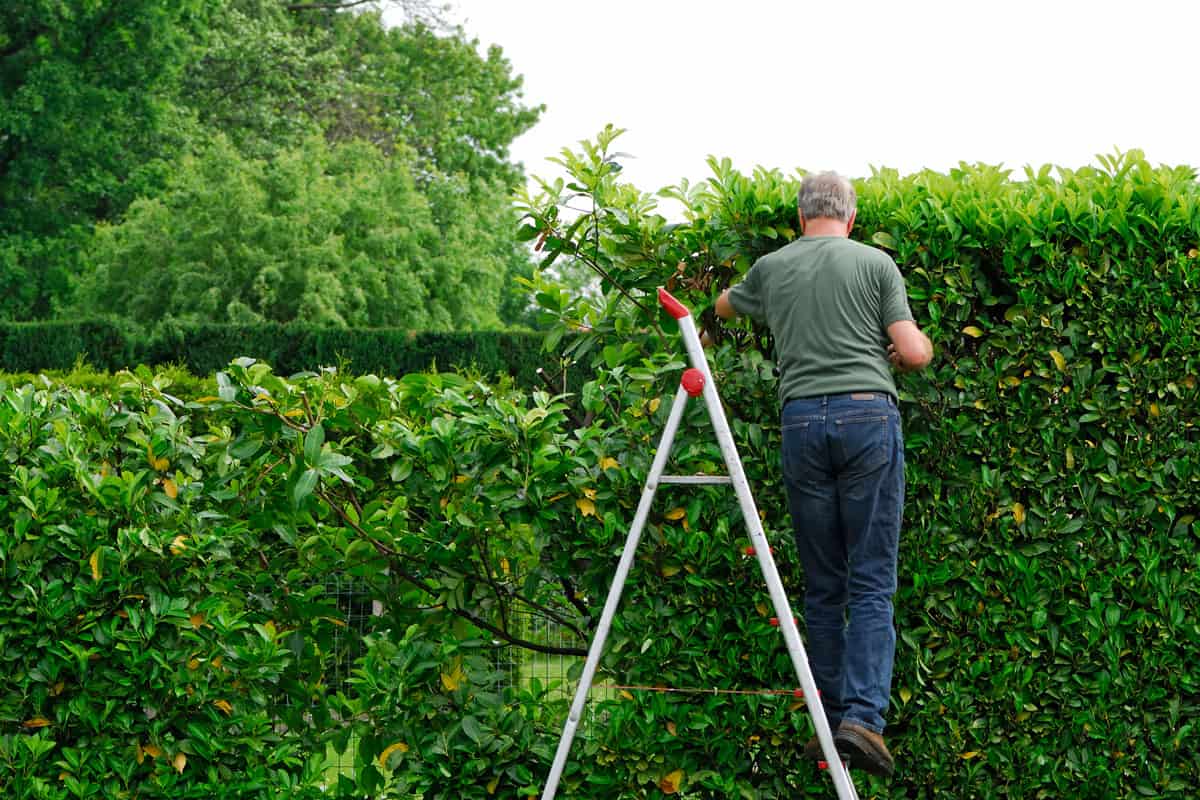Bay trees are ornamental plants. They can be planted for horticultural purposes, but when they are braided they become even more good-looking. If you would like to braid your bay tree, we have consulted experts, and here is how they suggest you do it.
Braiding a bay tree is relatively easy; here's what you should do:
- Look for healthy and straight stems.
- Plant the stems together in the same pot.
- Remove the leaves from the plant.
- When the stems are still pliable and sappy, braid them together.
- Trim off extras.
There are even more detailed ways to design your garden with this plant. So, if you own a garden or you're a horticulture enthusiast, keep reading as there's a lot to learn.
![visual close up photo of a green healthy leaves of laurel tree bay tree, How To Braid A Bay Tree [5 Steps To Follow]](https://gardentabs.com/wp-content/uploads/2022/08/How-To-Braid-A-Bay-Tree-visuals.png)
Bay Tree: An Overview
The bay tree is an easy and tender plant to cultivate. It is a very attractive, evergreen tree with oval-shaped leaves, so it can make a beautiful bush for your garden. Hence it is also used for horticulture purposes.
Apart from this, the plant serves culinary uses too. Because of its aromatic quality, its leaves are often used to season food. A host of dishes made with bay leaves taste very good. It also contains an essential oil with the compound cineole principal element. Use bay leaves either dried or fresh.

This plant is native to the Mediterranean region, but it is now grown worldwide. The bay plant (Laurus nobilis) is also called bay laurel or sweet bay.
One of the problems with the bay tree is that it will need a lot of care when it is tender. You may notice leaf spotting or yellow leaves, indicating that either the compost in the pot is old, the soil is waterlogged, or the weather is adversely affecting it.
It can also get destroyed by harsh weather attacks (especially in winter), infestation from microorganisms, or nutrient deficiency. The benefits of bay tree are numerous; some of them include, skincare, and hair care. It is also effective against cancer, diabetes, stomach ache, injuries, and many others.
How to Braid a Bay Tree
Braiding your bay tree can make it look even more beautiful, giving your garden a classic look. Braiding a bay tree is not a difficult task to do. It will take you at most four hours if you know what you are doing. The best time to engage in this activity is during the late spring or early summer season.
Here is the detailed method you can use to get a quick, easy, and braided bay tree:
Step 1: Look For Healthy Straight Stem
First, you need to look for a healthy young bay plant. You can get them from your local nursery. Or you can cut a branch from an already matured tree.
Take two or three stems, depending on what your braids look like. Make sure each parent plant is healthy.
Step 2: Plant Stems in the Same Pot
Now that you've got a healthy stem, you can remember that you need the plants close to each other so you can braid perfectly. Then, plant them in this same pot, or within lose contact with themselves.
Step 3: Remove the Leaves From The Plant
The next step is to remove the leaves from the plants, you can use clippers to remove leaves and pluck off any other smaller ones growing.
It is important to remove the leaves by cutting because the leaves help to aid transpiration, which will not be beneficial for the plant at that time.
Step 4: Braid Them Together
Now, you can easily braid close stems together. Braid stems that are pliable, whose stems are sappy. Braid stems loosely. This may not fit in properly at first but with time it will lap beautifully.
Step 5: Trim Off Extract
After braiding, use a rope or any alternatives to tie around the neck of the plant to avoid loosening. Cut off extra ropes and trim off the uneven growth of the shoots.
When Should I Shape My Bay Tree?
Bay trees are strong trees that can grow upwards of 30 feet tall without getting sick or bent. However, it is affected by winter or can lose its branches to disease.
They become very attractive when pruned, although they are not always pruned for horticultural purposes. Experts have found out that the best time to shape bay trees is during the late spring and early summer seasons. Any pruning after the summer period may damage the plants.
It is better to shape your tree during the summer because it increases the plant's strength, reduces plant diseases, and restores shape and structure.
How Do You Make a Bay Tree Bush

Making a bay tree bush will depend on what you want for your horticulture if you want a full-blown tree, a shrub, or a topiary.
The method of growing these trees to suit different styles is similar; the difference comes in the way you prune them. Naturally, bay trees are grown through air layering methods or by cutting (which is easier). Timely pruning will make a finer bush for your plant.
You can decide if you like an indoor or outdoor plant, but make sure you consider the soil type, fertilizer, sunlight, water, and temperature or humidity.
Here are the steps to grow a bay tree:
- Get a pot or a small space for a nursery where you can control humidity, sunshine, and other growth factors.
- Add soil and mix with fertilizer and water evenly. Make sure the soil is well drained.
- Dig a hole in the pot and put the bay plant.
- Care for your bay plant by applying fertilizer, water, and prune as it grows.
Can I Cut The Top Off My Bay Tree?
Bay trees are very tough trees that can take both light and severe pruning. Naturally, cutting the top of your bay tree may not pose any dangerous effect on the plants; it will give room for new shoots to come up. You can easily do this with a pruning shear.
Check out this Fiskars pruning shear on Amazon.
But on second thought, bay trees can grow well even after a hard pruning, so you may not need to cut off the top of the plants completely; you can choose to prune instead. Another good idea is you can plant bay trees from the cutting of the parent plant.
How Far Do Bay Tree Roots Spread?
If you are considering planting or transplanting a bay tree plant, you should also consider the plant's type of root system.
Bay trees have shallow roots, but the roots are very wide. We may not give an exact length of root width because of the variety of sizes, but you should expect a root system as wide as the plant's canopy.
It will be beneficial to consider the width of this plant when choosing a pot size or where to place it.
Can I Use My Bay Leaves Straight From The Tree?

Bay leaves provide a nice flavor to food. You can use leaves fresh, straight from the tree, or you could dry them out for days first.
Using bay leaves straight from the tree may retain a bitter taste in your food. If you can not handle this taste, you should dry the bay leaves before using it. Dry bay leaves do not have a bitter taste.
You should consider drying the leaves for about two weeks before using them. And it will be better to dry, grind and store for your culinary uses.
Also, you do not need a large number of bay leaves to cook; just two or three for a family-size meal is okay. Many times bay leaves are removed after food has been cooked.
How Long Does It Take For Bay Tree To Grow?
The bay plant grows very slowly and for a long period. That is why it can undergo severe pruning and survive. This plant can grow in the garden as a bushy shrub or as a household plant. It can also flourish into a full-blown tree above 23 feet in height.
It takes about 50 years to get to the size of maturity. For its germination, a bay seed has a very bad germination length of about six months. During that time, it is very good to check if your seed is rotten.
Bottom Line

Making your yard beautiful is a very good idea, and bay trees are one of the best horticultural choices because of their culinary purposes. Caring for a bay tree and even twisting the stems are easy projects you can carry out yourself, plus the pleasure of watching your creativity grow beautifully.
If you would like to read more about gardens, we recommend these articles:

